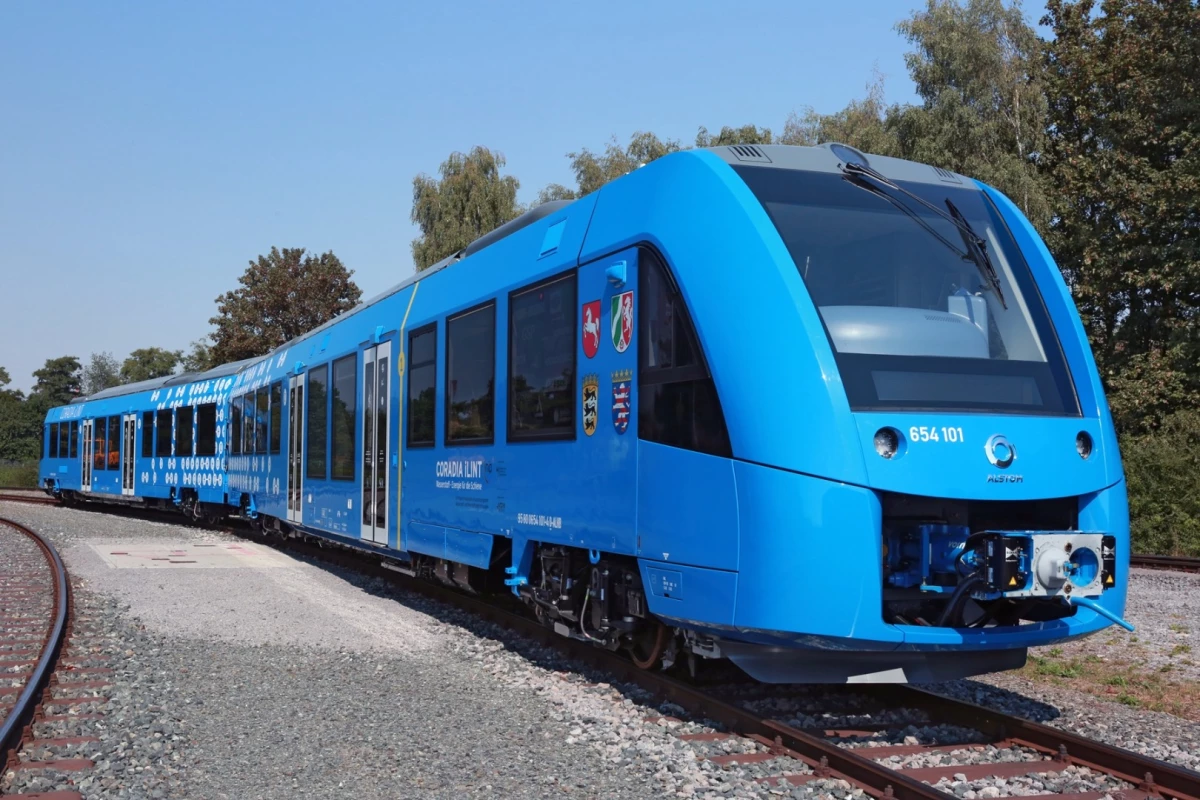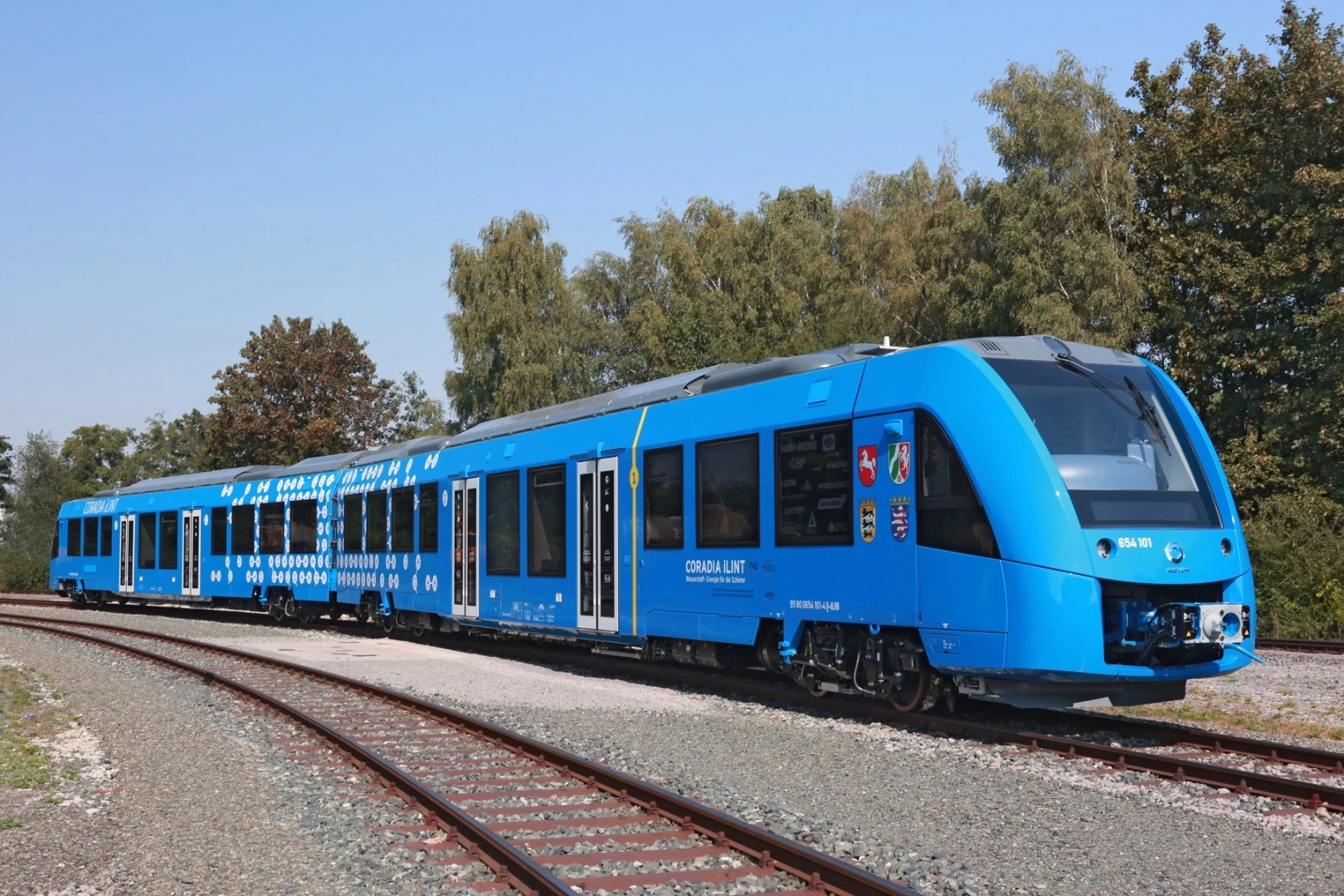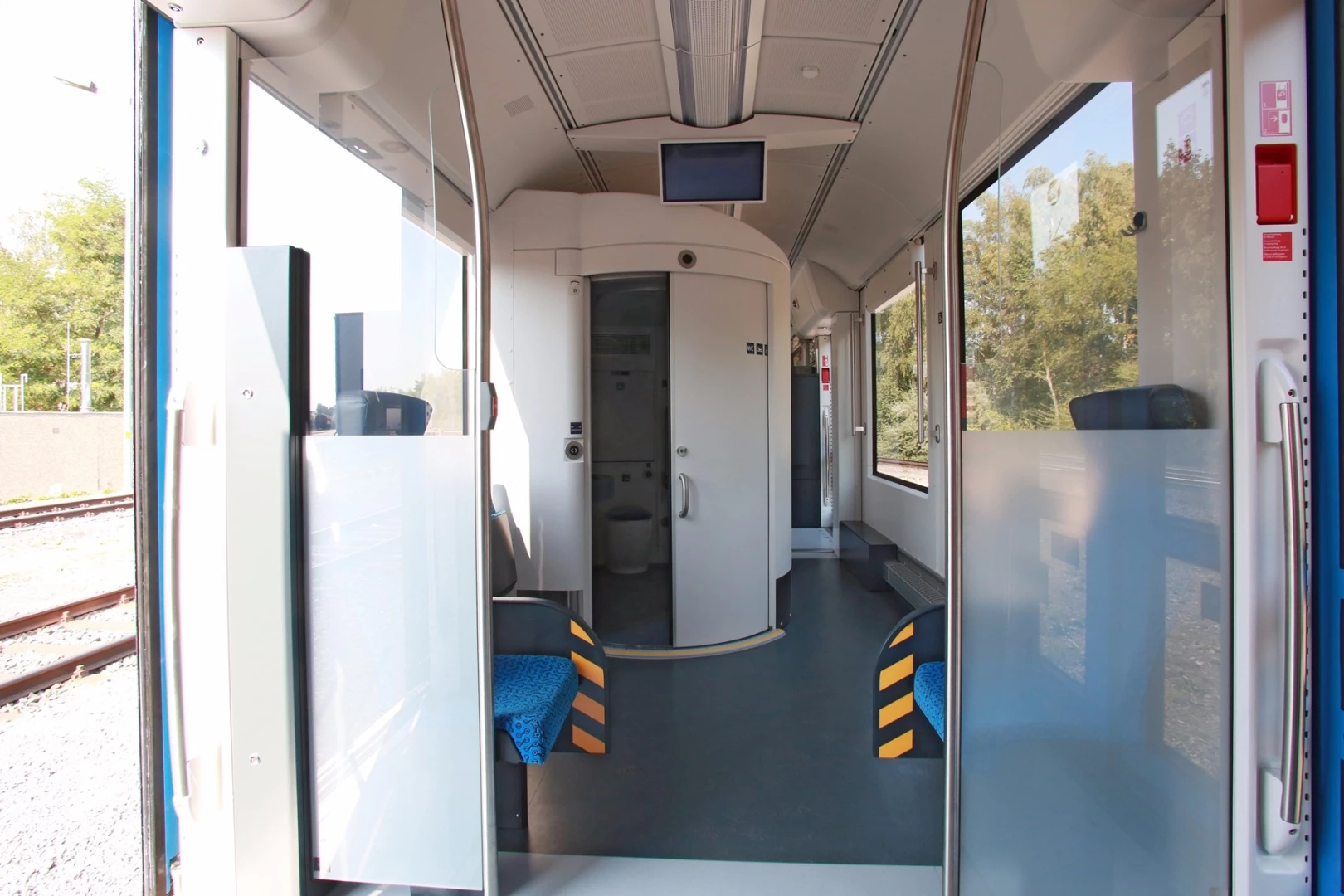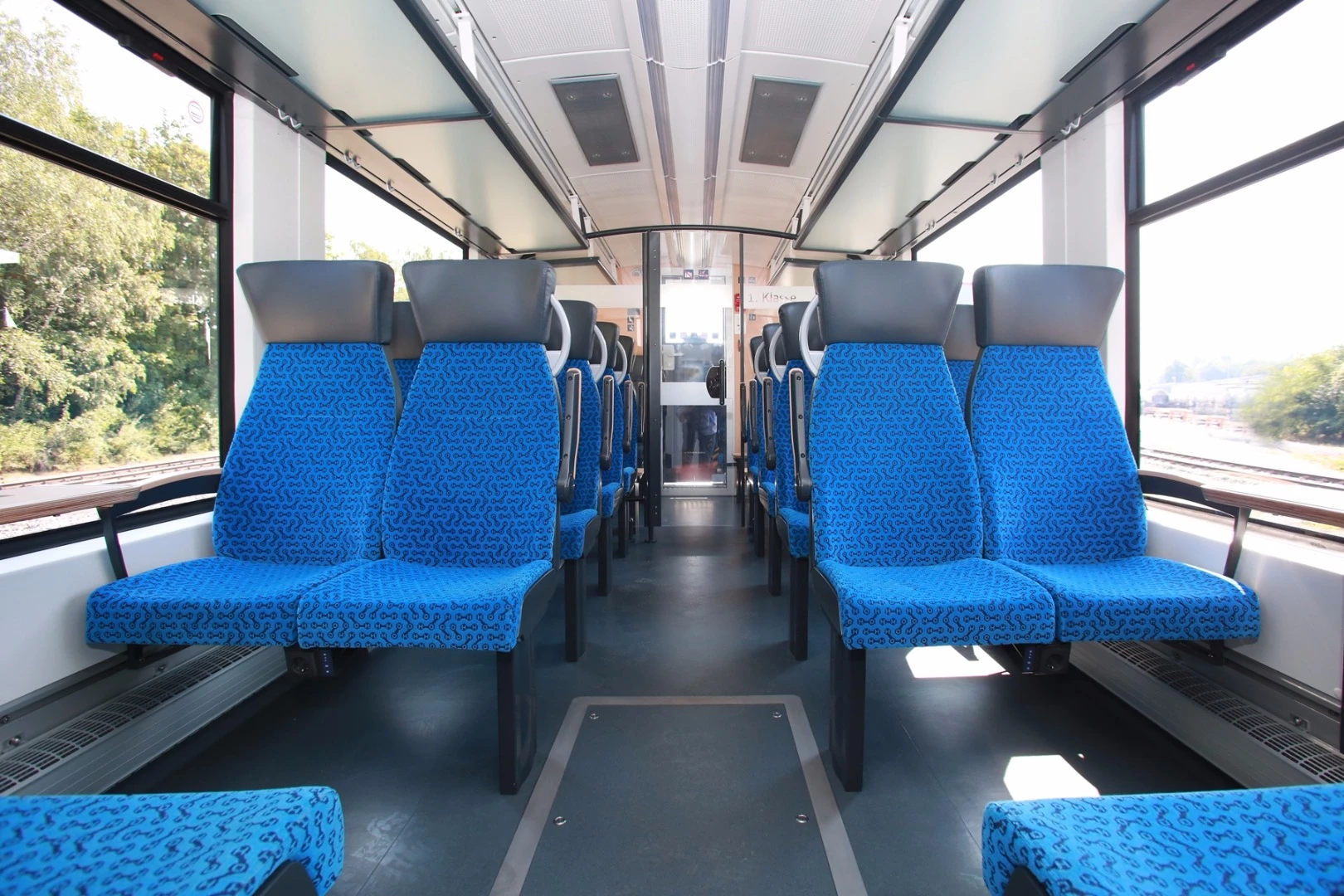Non-electrified regional rail networks are often served by diesel-powered trains. Alstom, however, has developed an environmentally friendly alternative. The electric Coradia iLint not only produces zero emissions, but features a smart energy management system and goes about its business nice and quietly.
The Coradia iLint is based on Alstom's diesel-powered Coradia Lint 54 and has a capacity of up to 300 passengers, including seats for 150. The top speed is listed as 140 km/h (87 mph) and is said to have comparable acceleration and braking performances to the Lint 54.
The fuel cell onboard the train mixes hydrogen with oxygen to produce electricity, which is stored in a lithium-ion battery that also draws on regenerative braking. A "smart power and energy management system" then selectively distributes power to parts of the trains as required, affording it a range of 600 to 800 km (370-500 mi) per tank of fuel.

The train produces no CO2, only steam and water as byproducts. It is also claimed to run very quietly. Alstom says it is one of the only railway manufacturers to develop a fuel-cell-powered passenger train and that the Coradia iLint is the first such train to boast low-floors, with the hydrogen stored in tanks on its roof.
Conscious of the effort it would require to roll out its fuel cell trains, Alstom is offering the Coradia iLint in a package that includes maintenance and refuelling infrastructure. There's no word on price, but the train is expected to go into operation from 2018.
The Coradia iLint is being presented at the InnoTrans trade fair, which runs from September 20-23.
Source: Alstom












